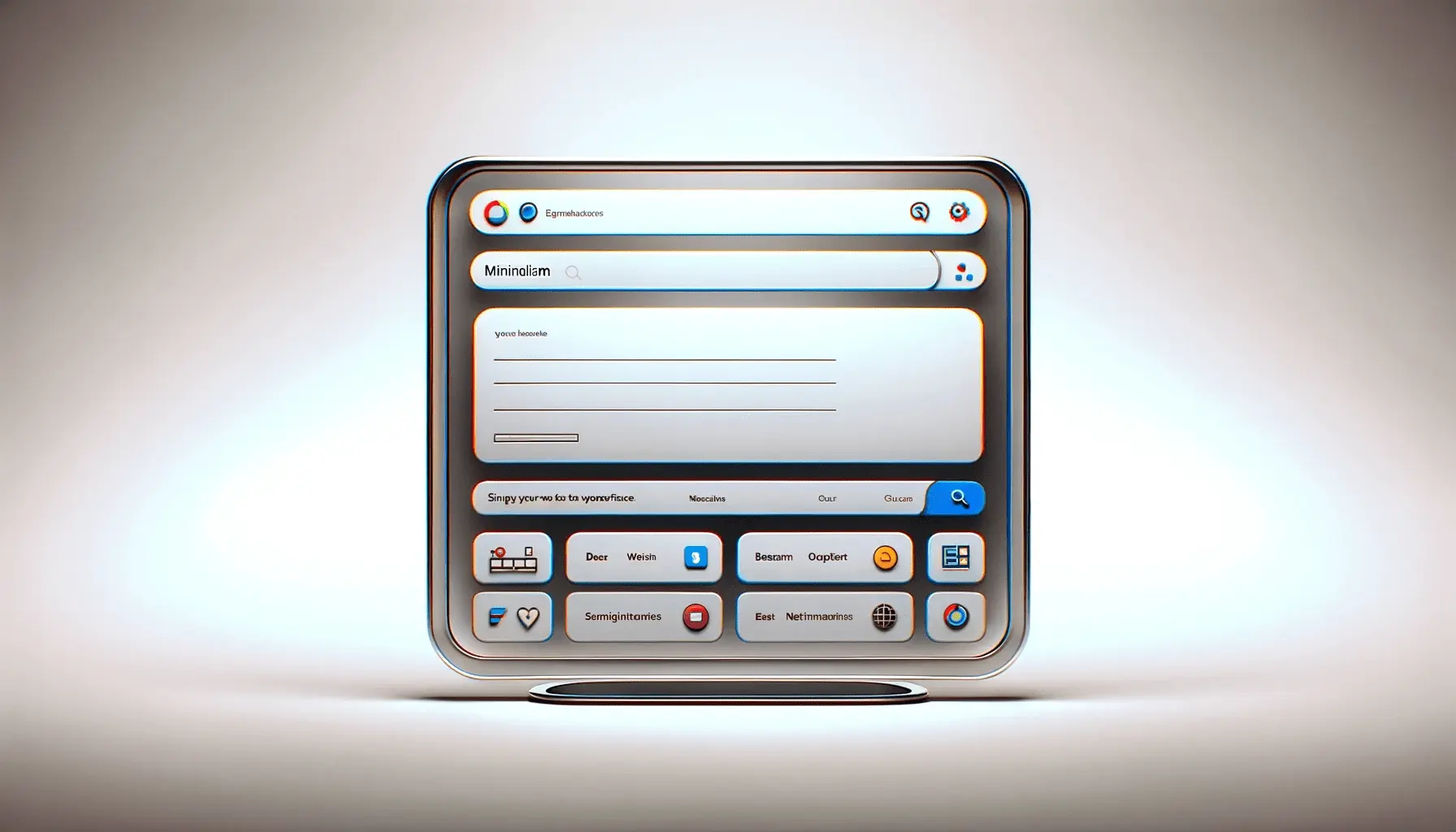In modern web design, visual narrative is central to how users experience a site.
One design feature that has taken center stage is the use of complex gradients.
These multi-colored and deep layering of gradations are greater than mere shading — they inject depth, feeling, and movement into a two-dimensional display screen.
In the age of minimalist culture, complex gradients have returned as a powerful way to take your designs to a higher level of engagement and remembrance.
So, what exactly are complex gradients?
How do they differ from the simple ones we’ve been using for years?
If you’ve ever found yourself wishing for more depth, more energy, or just more personality in your designs, then you’re in the right place.
This post is going to explain how complex gradients work and how you can use them to take your web projects to the next level.
- What Are Complex Gradients in Web Design?
- Design Principles Behind Advanced Gradients
- How to Create Complex Gradients with CSS
- Complex Gradients in UI/UX Design Trends
- Performance and Optimization Best Practices for Gradients
- The Lasting Impact of Complex Gradients in Web Design
- Frequently Asked Questions Regarding Complex Gradients
What Are Complex Gradients in Web Design?
Before we go any further, let’s define what we mean by complex gradients.
You’ve likely already employed a simple gradient in the past — maybe a soft transition from blue to white, or a linear combination of two pastel colors.
But complex gradients are something else.
They need more than one color, more than one stop, and typically more than one layer over another in order to produce a visual experience that’s rich, dense, and full of life.
Compared to simple gradients, which typically consist of two colors that blend into each other, complex gradients can consist of five or more color stops.
They often combine both linear and radial methods and even use transparency or texture.
The result?
A dynamic piece or background that adds a sense of depth and personality to your web design.
Definition and Purpose of Complex Gradients
Complex gradients are color changes that include numerous hues, opacities, and blending techniques that produce engaging visual effects.
They’re used to:
- Add depth and dimension to flat screens
- Highlight key design elements
- Create a mood or tone through color psychology
- Segment a brand by visually differentiating it
In short, they’re not background furniture — complex gradients are a narrative tool.
Differences Between Simple and Complex Gradients
Simple gradients serve a purpose, especially in clean and minimalist designs.
But if you’re aiming for richness and visual intrigue, complex gradients are your go-to.
Here’s how they compare:
- Color Stops: Simple gradients use 2–3; complex gradients use 4 or more.
- Direction: Simple gradients are usually linear; complex gradients combine directions.
- Depth: Flat gradients look boring; intricate complex gradients mimic light and shadow.
- Use Case: Simple gradients are fine for discreet transitions; intricate complex gradients are utilized for focal areas and dramatic declarations.
Popular Use Cases in Contemporary Interfaces
Currently, complex gradients dominate — from app splash screensIntroductory screens that appear while a mobile or web app is loading. to CTA buttons.
They have the following common uses:
- Hero sections in landing pages
- Product showcase backgrounds
- Overlay effects on video or images
- Button and UI element enhancements
They not only stand out but also give your site a professional and contemporary look.
How Gradients Create Depth in Visuals
One of the best things about using advanced complex gradients is how they are able to mimic depth.
By layering colors in creative ways, you’re able to create a three-dimensional look by replicating how light behaves with surfaces.
Think about how shadows and highlights work in the physical world.
Gradual complex gradients bring that sensibility to your online work.
It’s a kind of gentle visual trickery that can be a great asset to making your site feel finished and interesting.
Next, you’ll learn how to make these complex gradients yourself and apply them to your own projects.
Ready to advance your designs?
Let’s get into the design principles next!
Complex gradients are more than decoration—they are a deliberate design decision that blends depth, texture, and emotional resonance into your digital interface.
Design Principles Behind Advanced Gradients
Now that you know what complex gradients are and how they enrich your designs, it’s time to discover the design principles that drive them.
Being a guru of complex gradients is not simply throwing colors together at random — it’s a matter of building balanced transitions that are effective with respect to design goals and user experience.
Let’s explore how color theory, lighting, color palette selection, and design order all combine to create truly enticing gradients.
Color Theory and Gradient Composition
Color theory is the foundation of all successful design work, and complex gradients are no exception.
You’re not just choosing pretty colors — you’re creating a visual journey.
Using neighbor colors on the color wheel (analogousA color scheme that uses colors next to each other on the color wheel for harmonious designs. colors) gives you flowing and peaceful transitions, while complementary or triadicA color scheme using three colors evenly spaced around the color wheel, creating strong visual contrast. combinations can create sharp, energetic gradients.
In multi-gradient schemes, you must be aware of the impact of color on emotion.
Blues will create calmness, reds will trigger urgency or excitement, and greens bring balance and freshness.
If you use a number of colors intentionally, the complex gradient can influence your user’s emotions just like imagery or copy would.
- Utilize color harmony to maintain visual balance
- Limit your palette to 3–5 core colors to avoid making things too cluttered
- Test your complex gradient on different devices and screens
Light, Shadow, and Sense of Depth
Desire your gradients to be more realistic and captivating?
Start to think like a lighting designer.
Detailed complex gradients can replicate the manner in which light is present in nature on a surface — where it recedes, where it advances, and how it gradates.
This is especially beautiful when combined with shadows or soft textures.
You can use light colors one way to simulate highlights, and dark, more saturated colors to mimic shadow.
This creates your complex gradient a sense of movement and depth, turning flat objects into visually stimulating ones.
- Use highlight-to-shadow gradients for depth
- Pair with soft drop shadows for subtle 3D effects
- Experiment with transparent layers for realism
Selecting Harmonious Color Schemes
When making complex gradients, the choice of palette is what will make or break your visuals’ aesthetic.
Sites like coolors.co, Adobe Color, or Gradient Hunt can help you experiment with trending palettes while staying within your brand identity.
Don’t forget to verify contrast and legibility — especially for gradients to be used behind text.
Trendy complex gradients in 2025 are more ethereal blends of lavender, teal, and peach, or high-tech ones like neon cyan and dark violet.
These are ideal for hero sections or feature cards where you want the visuals to pop without overwhelming the user.
- Select palettes from emotion and theme
- Ensure ADA accessibility by checking color contrast
- Use semi-transparent overlays for better harmony
Avoiding Common Gradient Mistakes
Even professional designers fall prey to it.
The biggest mistake with complicated complex gradients is to make the transition too complicated or choose colors that clash.
Cluttered gradients look messy and make your interface harder to use.
Keep it simple and test extensively.
Don’t rely on complex gradients as a crutch — they are there to complement your content, not take the focus away from it.
And never, ever forget to test how your gradient looks on mobile or in other lighting situations.
- Don’t have too many colors or stops
- Don’t have saturated colors that battle each other
- Test the readability when putting text over complex gradients
By following these rules, your complex gradients will not just be nice-looking — they’ll be intentional, helpful, and stunning.
Now that we’ve got these rules sorted out, let’s discuss how you can use CSS methods to make them occur.
When you view gradients as emotional storytelling tools rather than aesthetic add-ons, your designs start speaking to users on a deeper level.
How to Create Complex Gradients with CSS
Now that you understand the principles behind complex gradients, it’s time to bring them to life with code.
CSS has become incredibly powerful when it comes to creating vibrant, multi-layered color transitions.
Whether you’re designing background visuals or enhancing UI components, complex gradients can be crafted using pure CSS with surprisingly versatile techniques.
If you’ve only ever used basic linear gradients, you’re in for a treat.
CSS allows you to mix and match different gradient types, apply multiple layers, and even use transparency and blending to achieve depth and realism.
Let’s break down how you can master complex gradients with CSS.
CSS Gradient Syntax Essentials
CSS supports three main types of gradients: linear, radial, and conic.
Each can be customized to build layered, multidimensional visuals.
Understanding the basic syntax is key to manipulating these complex gradients effectively.
- Linear gradients: Use linear-gradient() with direction and color stops.
- Radial gradients: Use radial-gradient() to create circular or elliptical transitions.
- Conic gradients: Use conic-gradient() for pie-like or circular designs (newer browser support).
Each function allows you to add multiple color stops, giving you full control over how colors flow and interact within your complex gradient.
Using Multiple Layers for Complex Effects
One of the most effective ways to build complex gradients is by layering multiple gradients on top of each other.
CSS allows you to stack gradients using the background property and separate each layer with commas.
This method lets you create soft light effects, patterns, or textures within your gradient by combining linear, radial, or even semi-transparent layers.
- Use multiple
background-imagevalues - Adjust
background-blend-modefor layering behavior - Control each layer’s position and size individually
Adding Transparency and Blending Modes
Want to create mood and realism with your complex gradients?
Try using transparency and blending.
You can add rgba() values for partially see-through colors, and CSS’s background-blend-mode property gives you control over how layers interact.
Blending modes like multiply, screen, or overlay mimic effects seen in Photoshop — directly in your browser.
- Use
rgbafor see-through gradient colors - Apply
background-blend-modeto add depth - Stack dark and light gradients for realistic shading
Combining Radial and Linear Gradients
To push your visuals further, you can mix gradient types.
Combine a radial gradient to simulate a glow or spotlight effect, with a linear gradient for color flow across the background.
This pairing is especially effective in UI components, like cards or hero sections, where you want multiple visual layers without using images.
It’s this combination that makes complex gradients so exciting — the ability to blend art and function through smart CSS layering.
- Use radial gradients for center highlights or focal points
- Overlay linear gradients for directional flow
- Control positioning with
background-position
Tools and Generators for Designers
You don’t always need to build your complex gradients from scratch.
There are fantastic tools that help you visualize, test, and generate CSS code for even the most intricate designs.
- CSS Gradient: User-friendly tool for creating linear and radial gradients
- Mesh Gradient Generator: For organic, flowing multicolor blends
- UI Gradients: Browse trending gradient combinations
- CSS Hero or Gradient Hunt: Great for inspiration and one-click CSS export
These tools let you experiment freely and then copy production-ready code, saving time while elevating your design quality.
With CSS on your side, building complex gradients becomes both an art and a technical skill.
Next, we’ll see how these gradients are being used in the latest UI/UX trends and what’s next for gradient design in 2025.
Layering gradients with CSS opens up endless visual possibilities—blend radial and linear types for rich, immersive UI effects.
Complex Gradients in UI/UX Design Trends
With advancing design in 2025, complex gradients have been a leading visual trend in UI/UX design.
From suave, high-tech-looking interfaces to subtle background effects, designers are leveraging complex gradients to create immersive, engaging digital experiences.
So why are complex gradients so popular as a design tool?
The answer lies in their adaptability, emotion-based color-blending, and ability to integrate into various themes and platforms.
Let’s explore deeper into how complex gradients are being used in today’s design trends — and how you can apply them to bring your own user experiences to the next level.
Gradient Use in Contemporary UI Kits
Some of today’s best-downloaded UI kits include complex gradients as an integral visual element.
From mobile app prototypes to web dashboards, gradients are used to define areas, create depth, and steer user attention.
Design systems are increasingly using layered gradient aesthetics instead of flat colors.
They’re used for buttons, toggles, modals, and input fields to provide interfaces with a tactile, dimensional feel without heavy imagery or JavaScript effects.
- Gradient overlays over cards and containers
- Multi-tone hover effects over interactive components
- Blurred, soft backgrounds for clear UI segregation
Mobile App Interfaces and Gradient Depth
Mobile real estate is limited in UI design — and each pixel counts.
Fine grain complex gradients are ideal for adding richness to mobile interfaces because they enhance visuals without increasing file size or load time.
Most mobile-first design systems employ gradients as key elements within splash screens, navigation bars, and call-to-action regions.
Complex gradients also help smooth transitions between regions of the app and reduce visual fatigue when used with soft colors or glassmorphismA UI design style characterized by frosted-glass effects, background blur, and transparency.-type effects.
- Employ gradients to create hierarchy in mobile compositions
- Combine gradients with semi-transparent overlays for smooth transitions
- Add motion or animation for interactive depth
Dark Mode and Gradient Adaptation
Dark mode is not an option anymore — it’s a design requirement.
Designing dark mode introduces new challenges, especially for complex gradients.
When done well, dark mode gradients can create subtle texture and break visual monotony without overwhelming the eye.
Designers now create complex gradients specifically for low-light interfaces by applying muted purples, blues, and deep teals with careful control of contrast to ensure legibility and comfort.
- Use low-luminance, rich, deep colors for backgrounds
- Combine with neon or pastel accents for visual appeal
- Test contrast ratios to meet accessibility standards
Neumorphism and Gradient Backgrounds
Neumorphism is still a trend in UI design, and complex gradients are key to creating its soft, extruded appearance.
By blending shadows and highlights through gradient techniques, you can create depth without relying on hard edges or drop shadows.
This method is best applied in the creation of UI elements like switches, sliders, and cards that seem to be both tactile and minimal at the same time.
- Utilize subtle inner and outer shadows with gradients
- Employ light-to-dark transitions with soft elevation
- Minimize color range to maximize the 3D illusion
Accessibility Considerations for Gradients
While intricate complex gradients bring beauty and depth, they can also create accessibility issues if not treated with care.
Inadequate contrast between gradient layers and text can harm readability, particularly for visually impaired users.
Inclusive design is the focus of modern UI, so it’s critical to review your use of complex gradients to make sure they don’t detract from user experience.
Stark or Contrast Checker are tools that can help verify your design decisions.
- Avoid placing light-colored text over multi-tone gradients
- Use high-contrast color stops for better visibility
- Ensure interactive elements remain recognizable with or without gradients
Complex gradients aren’t just visually stunning — they’re functional design tools that elevate your interface when used with purpose.
In the final section, we’ll explore how to keep performance in check while using gradients efficiently in your designs.
Modern interfaces use complex gradients not just for beauty, but to create hierarchy, guide focus, and enhance emotional connection.
Performance and Optimization Best Practices for Gradients
Though rich complex gradients are beautiful to the eye, they have performance implications.
On modern websites and applications, performance is equally important as aesthetics — particularly when designing for mobile users or users on slow networks.
Complex gradients that aren’t optimized well can increase rendering times, lead to layout jumps, or result in visual discrepancies between devices.
But don’t worry — with the proper strategy, you can enjoy the beauty of refined complex gradients without sacrificing speed or efficiency.
Optimizing CSS Load with Lean Gradient Code
Step one of optimization is coding lean CSS.
Unnecessarily long or repeated complex gradient declarations can bloat your stylesheet.
Use caution with your color stops and avoid extra layers when a single gradient will do.
- Minimize the number of color stops if absolutely necessary
- Avoid excessive background layering
- Minimize file size using CSS shorthand
Additionally, do not duplicate gradient code for different selectors — reuse it using CSS variables to make your code more maintainable.
Fallbacks for Older Browsers
Although complex gradients are now supported by most contemporary browsers, older browsers may not display them properly.
To ensure consistent output, it’s a good idea to define fallback background colors prior to the gradient declaration.
In this way, if the browser is not capable of displaying complex gradients, users will still see a solid background that maintains contrast and readability.
- Always define a solid color fallback before the gradient rule
- Test on legacy browsers or emulators to ensure compatibility
- Use progressive enhancement: gradients are an extra, not a requirement
Balancing Looks and Speed
Gorgeous complex gradients are amazing, but including too many in one viewport can be overwhelming and impact performance.
Use them for dramatic effect only — reserve substantial gradient applications for hero areas or callouts, and use lighter gradients in background spaces.
When using gradients with blending modes or alpha transparency, avoid overloading your GPU, especially in transitions or animations.
Browser rendering engines may be sensitive to excessive visual effects.
- Apply gradients where their visual effect is greatest
- Avoid stacking too many effects on interactive elements
- Keep animations with gradients subtle and smooth
Using SVGs vs CSS for Complex Backgrounds
Sometimes, creating complex gradients using SVG is superior to CSS.
SVG gradients can be more precise and reusable, especially when combined with shapes, masks, or animations.
They are also resolution-independent, making them ideal for high-DPI displays.
Use SVGs sparingly though — inline SVGs contribute to HTML size, and external files result in additional HTTP requests.
Choose based on the needs of your project and its overall architecture.
- Use CSS gradients for simple to moderately complex layouts
- Choose SVG for complex layering, masking, or animation effects
- Optimize and compress SVG files for faster loading
By using these optimization methods, you can keep your sophisticated complex gradients streamlined and fast.
Good looks don’t have to sacrifice speed.
With proper balance, you’ll deliver both performance and aesthetic impact — giving users the experience they deserve.
Overusing complex gradients can slow down your site—balance visual flair with lean code and fallback strategies for smooth user experiences.
The Lasting Impact of Complex Gradients in Web Design
Why Complex Gradients Are More Relevant Than Ever
With digital experiences increasingly immersive, the significance of complex gradients grows stronger.
They’re not merely decorative anymore — they’re a tactical design element that infuses emotion, depth, and readability into user interfaces.
Whether you’re designing a minimalist landing page or a feature-loaded mobile app, complex gradients are a visually stunning means to express your brand identity and values.
From soft depth in neumorphismA design trend that uses subtle shadows and highlights to create a soft, extruded plastic look. to layered vibrancy in mobile apps, complex gradients prove their versatility across styles and platforms.
Their ability to simulate light, influence user perception, and draw attention makes them invaluable in today’s web design toolkit.
What You’ve Learned About Complex Gradients
Throughout this article, we’ve explored the theory, application, and performance considerations of complex gradients.
You’ve discovered how they’re crafted, how they shape user experiences, and how to ensure they’re both beautiful and functional.
Here’s a recap of the key insights:
- Understanding: Complex gradients use multiple color stops, layers, and techniques to create depth and emotion.
- Design Principles: Successful gradient design relies on color harmony, light simulation, and well-planned palette choices.
- Implementation: CSS provides precision layering, blending, and animation of gradients. Tools like Gradient Hunt and CSS Gradient can facilitate the process.
- UI/UX Trends: From neumorphism to dark mode, complex gradients enhance today’s visual styles and elevate interfaces across devices.
- Performance: Optimization is key. Efficient code, fallbacks, and device-aware strategies ensure that gradients enhance rather than hinder performance.
Practical Takeaways for Designers and Developers
If you’re ready to bring complex gradients into your next design project, keep these best practices in mind:
- Use gradients purposefully — don’t add them just for decoration.
- Consider accessibility and contrast when layering text over gradients.
- Test your gradients on various devices and under varying lighting.
- Balance style with performance to maintain quick load speeds.
- Stay updated with UI trends and adjust your gradient approach accordingly.
Final Thoughts on Design with Depth
In an era where attention spans are short and digital experiences are everywhere, complex gradients offer a powerful opportunity to stand out.
They allow designers to blend color, feeling, and depth in a way that flat design can only imagine.
By applying the knowledge and concepts in this article, you can begin building interfaces that aren’t just visually appealing but also intentional and engaging.
Tap into the power of complex gradients — and let your designs live and breathe with purpose.
Design with intention—complex gradients are not a trend, but a timeless method for adding expression and meaning to digital environments.
Quality web design is key for a great website! Check out our service page to partner with an expert web design agency.
Frequently Asked Questions Regarding Complex Gradients
The following are some of the frequently asked questions designers and developers have regarding complex gradients in modern web design.
These responses aim to explain key principles and help you apply them in your work better.
A complex gradient is comprised of more than one color stop, direction, or layer to create rich visual transitions, adding depth and emotion to a design beyond what simple gradients can offer.
There is no set rule, but most complex gradients use 3 to 7 color stops to strike a balance between visual richness and performance efficiency.
Yes, especially if overused or poorly optimized.
To avoid performance issues, keep your CSS lean and avoid unnecessary layering or animations when applying complex gradients.
Yes.
Complex gradients are widely used in mobile UI for backgrounds, splash screens, and CTA buttons, adding visual depth without significantly increasing file sizes.
They can be, if contrast is considered during creation.
Always test text readability over complex gradients and follow color contrast accessibility standards.
Tools like CSS Gradient, Gradient Hunt, and MeshIn design, refers to a gradient style that blends multiple colors in a fluid, organic way. Gradient Generator help you visualize and export CSS-ready complex gradient code quickly and efficiently.
Yes, you can animate background position or transition between gradient colors.
Just monitor performance carefully, especially on mobile devices or older browsers.
CSS is ideal for simple to moderately complex gradients.
SVG is better for advanced shapes, masking, or scalable and reusable designs across screen resolutions.
Complex gradients align perfectly with trends like neumorphism, glassmorphism, and dark mode, offering layered, emotive visuals while supporting UI clarity and brand expression.












